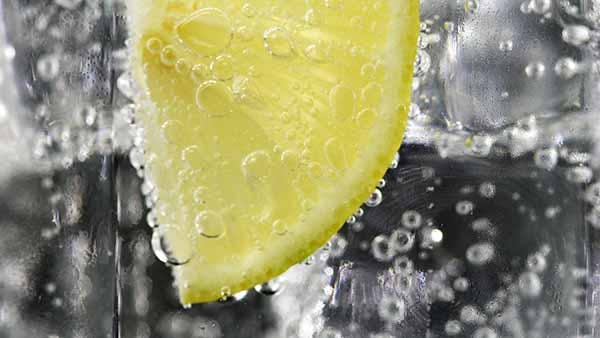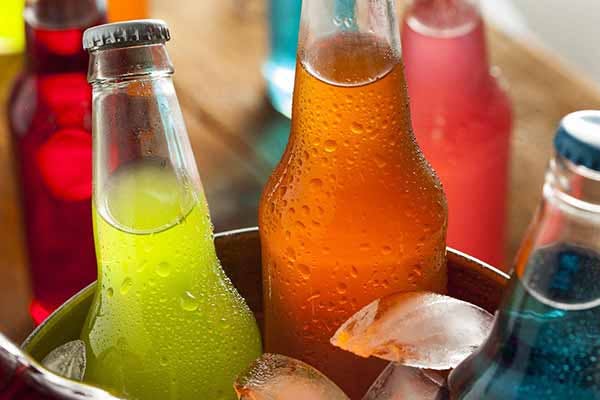🌟 New Arrival! Upgrade Your Water with Our Advanced Pitcher Filter. Shop Now
June 2022
Are Carbonated Drinks Healthy and Safe?
Sparkling water is a popular beverage choice that's often a great alternative to soft drinks, juices, or plain water. Common beverages such as club soda, seltzer, sparkling water, tonic, fizzy fruit-flavored drinks, soda, beer, or fizzy energy drinks are all products of carbonation.
While many people enjoy bubbly, carbonated beverages as a replacement to plain filtered water or other drinks, there have been concerns about the impact on personal health when regularly consuming these types of refreshments. However, there’s been no solid evidence to suggest that carbonation is bad for you.
This article will talk about the origins of carbonation, how creating carbonated drinks is done, and the health factors related to carbonation, among other things.
Who Invented Carbonation and When?
Seltzer or carbonated water was invented in 1767 by Joseph Priestley, who is considered the inventor of soda water.
Priestley was a scientist who contributed to religious and philosophical studies, political theories, and took a keen interest in chemistry. Before developing an interest in chemistry and gases, he was inspired to conduct electrical experiments to generate and store currents by building specific apparatuses.
He would later become involved in the study of gases. The nature of gases piqued Priestley's interest when he lived near a brewery, observing the effects of fermentation and the changes to the leftover water, which resembled mineral waters or springs. He would go on to discover that carbon dioxide, the main gas used to carbonate water, could be made through a reaction between sulfuric acid and calcium carbonate (CaCO3).
During his research and development of apparatuses, Priestley discovered several gases, including:
- Nitrogen dioxide (NO2)
- Nitrous oxide
- Sulfur dioxide (SO2)
- Silicon tetrafluoride
- Oxygen
- Nitric oxide
- Hydrogen chloride
- Carbon monoxide
- Ammonia
While other scientists discovered some of these gases independently around the same time, Priestley became well known for his ability to extract and collect gases for various experiments, which eventually led to creating carbonated water beverages.
Priestley initially created an apparatus that pumped pressurized gas into the water to create a sparkling beverage — essentially a precursor to SodaStream machines.
How Does Carbonation Occur?
The carbonation process occurs when carbon dioxide, in its gas form, is saturated in water by injecting it into a water-based liquid using high pressure. During this process, tiny bubbles form and spread throughout the liquid to create a variety of carbonated drinks. A pressure of 55 PSI is required to carbonate water, which is done with a gas regulator valve, allowing for adequate saturation. While most carbonated water beverages are carbonated with a pressure of 20 PSI, the higher gas pressure setting is essential for maintaining the fizz consistently in your drink.
Carbon dioxide (CO2) comes from both natural sources (including volcanoes, the breath of animals, and plant decay) and human sources (primarily the burning of fossil fuels to generate energy).
Your body also naturally releases carbon dioxide through your lungs. It's released after bicarbonate — created from the body's metabolism — travels to your lungs through the bloodstream, and is then exhaled as carbon dioxide gas. This chemical is regulated and reabsorbed by the kidneys, which helps maintain your body's pH balance.
What's Henry's Law and How Does It Relate to Carbonated Drinks?
Henry's Law is a gas law that explains how gas chemically reacts in a liquid to create carbonation. This law states that the amount of gas dissolving in a liquid at a constant temperature corresponds to the partial pressure of the gas above the liquid.
William Henry, a chemist, developed the law based on his experiments on gases absorbed in water.
According to this law, the gas or headspace above the drink in a sealed, unopened bottle or can is composed of nearly pure carbon dioxide. Pure carbon dioxide is separate from what’s contained in the sparkling beverage, which is released into the air when you open the can or bottle of your carbonated drink. Therefore, once the container is opened, the liquid will off-gas over time and go flat the longer it’s left open.
The chemical reaction of carbon dioxide in water produces carbonic acid, a weak acid known as H2CO3. This gas decomposes when you open a bottle of pressurized soda or a carbonated beverage, which creates a fizzy sound.
How Is Water Carbonated Today?
Carbonated water requires pressurization to remain fizzy, which is why soda, seltzers, and sparkling drinks "pop" when you open a bottle or can.
Various products on the market allow you to create sparkling water and soda beverages at home, such as the SodaStream, Spärkel Beverage System, and others, enabling you to set the level of carbonation. The ION water cooler carbonates using a CO2 regulator and booster water pump, and stores your fizzy water in one or more tanks.
Is Carbonation Healthy for You?
Generally, carbonated water or seltzer water is a healthy drink, and it's just as safe and hydrating as plain, filtered water. If you don’t like to drink plain water, carbonated options are a great way to stay hydrated.
Beverages with added sugar or additives may decrease the health advantages of sparkling drinks. Carbonation on its own is safe and doesn't pose any risks.
Is Carbonation Bad for You?
While there have been concerns about the effects of carbonation on bones, calcium levels, and tooth health, there is no evidence that supports these claims.
The carbonation reactions don't add harmful substances or chemicals to the beverage.
However, once additional ingredients are added, such as sugar, citric acid, and artificial flavors, there’s an increased risk of damaging the tooth enamel and bone health.
If you have a sensitive stomach because of a medical condition such as IBS, you may notice gaseous discomfort after enjoying a sparkling water beverage. Likewise, if you consume soda too quickly, you may feel excessive gas, which tends to release swiftly and reduce any sensation of discomfort.
Carbonated drinks tend to create gas because carbonation adds to the amount of air you swallow when you drink. The extra air moves into your digestive tract, which increases the amount of gas in your body.
Can Carbonated Drinks Cause Headaches?
While carbonated drinks don't typically cause headaches, fizzy beverages containing higher amounts of caffeine, such as energy drinks, may lead to headaches.
That said, the increased amount of carbon dioxide gas consumed with a carbonated drink sans additives can cause heartburn, headaches, and stomach aches in some sensitive people.
What Is the Healthiest Carbonated Drink?
The healthiest carbonated drinks don't contain additional ingredients or natural flavors, which could negatively impact your health. These include sparkling water, seltzer, club soda, and sparkling water drinks with a splash of fresh citrus or freshly squeezed juice.
There are also specific carbonated beverage products that are generally healthy; these include drinks such as naturally flavored sparkling mineral water, sparkling coconut water, and natural fruit-flavored, sugar-free sodas.
Kombucha is a sparkling tea that may support metabolism, reduce inflammation, and improve chronic conditions. Further benefits of kombucha come from probiotics due to fermentation, which is excellent for gut health and digestion. Fermentation causes natural carbonation in kombucha.
The fizzy beverages discussed above typically contain no added sugar, additives, or calories, which helps maintain a healthy diet and lifestyle.
What Happens to Carbonated Drinks in High Temperatures?
High temperatures will cause soda or sparkling beverages to lose their fizziness quickly. This process occurs because the gases' solubility in carbonated drinks decreases.
It's important to avoid heating a pressurized can or bottle of soda, or any carbonated liquid, as this may cause the container to explode due to the high pressure inside.
Why Is There Space at the Top of a Bottled Beverage?
The top space of a bottle of soda is what keeps your carbonated beverage stable and prevents the container from bursting. The space left at the top is calculated based on the size of the bottle and the amount of liquid inside. This small space at the top also prevents most drinks from exploding when shaken.
How Much Carbonation Is in Coke?
Coca-Cola is considered one of the most carbonated beverages, and it contains 3.5 to 4 volumes of CO2 (a measure of the relative volumes of CO2 per volume of liquid).
In comparison, Champagne contains the highest volume, between 4.6 and 6, and other sodas, tonic water, and sparkling beverages range in volume between 2.5 and 4.
Why Does Carbonation Burn?
The tingly burning sensation occurs due to the carbonic acid that reacts chemically with your nerve receptors. In addition, carbonated beverages contain a pH level of 3 to 4, making them more acidic.
You'll notice a more substantial tingling experience with higher levels of carbonation.
If you consume a lot of carbon dioxide, your body will filter any excess through the lungs and kidneys. This process keeps your body at a slightly higher alkaline level so that the acidic level of a carbonated beverage doesn't negatively impact your body's pH balance.
Are There Nutrients in Carbonated Beverages?
Most carbonated sodas and water do not contain significant nutrients, though sparkling and plain water contains naturally occurring minerals and silicates such as calcium, sodium, iron, magnesium, and potassium. In addition, some sparkling mineral waters contain silica, providing health benefits and supporting the immune system.
While plain, unfiltered water contains many minerals, there’s no significant source of proteins, vitamins, or other nutrients.
Sparkling or Flat? It Mostly Comes Down to Preference
Overall, carbonated beverages naturally made without sugar, additives, and high sodium are generally healthy and safe to enjoy.
Sparkling water is a great way to enjoy the benefits of plain, filtered water, adding an enjoyable carbonated sensation with every sip, and perhaps even a bit of added elegance.
As healthier options for sparkling beverages become more available, it's easier to skip sugary sodas and artificially produced drinks in favor of homemade, naturally flavored sparkling beverages.
Since its invention, carbonation has revolutionized how we enjoy drinks, from beer and sparkling wine to regular sodas, sparkling water, and specialized beverages, including kombucha and energy drinks. It's an alternative way to create and enjoy tasty refreshments that are generally safe and fun.
Want to enjoy healthy sparkling water at home? Simply use a sparkling water maker with your water filtration system by HomeWater.
Brought to you by homewater.com
All images licensed from Adobe Stock.
Featured Image

